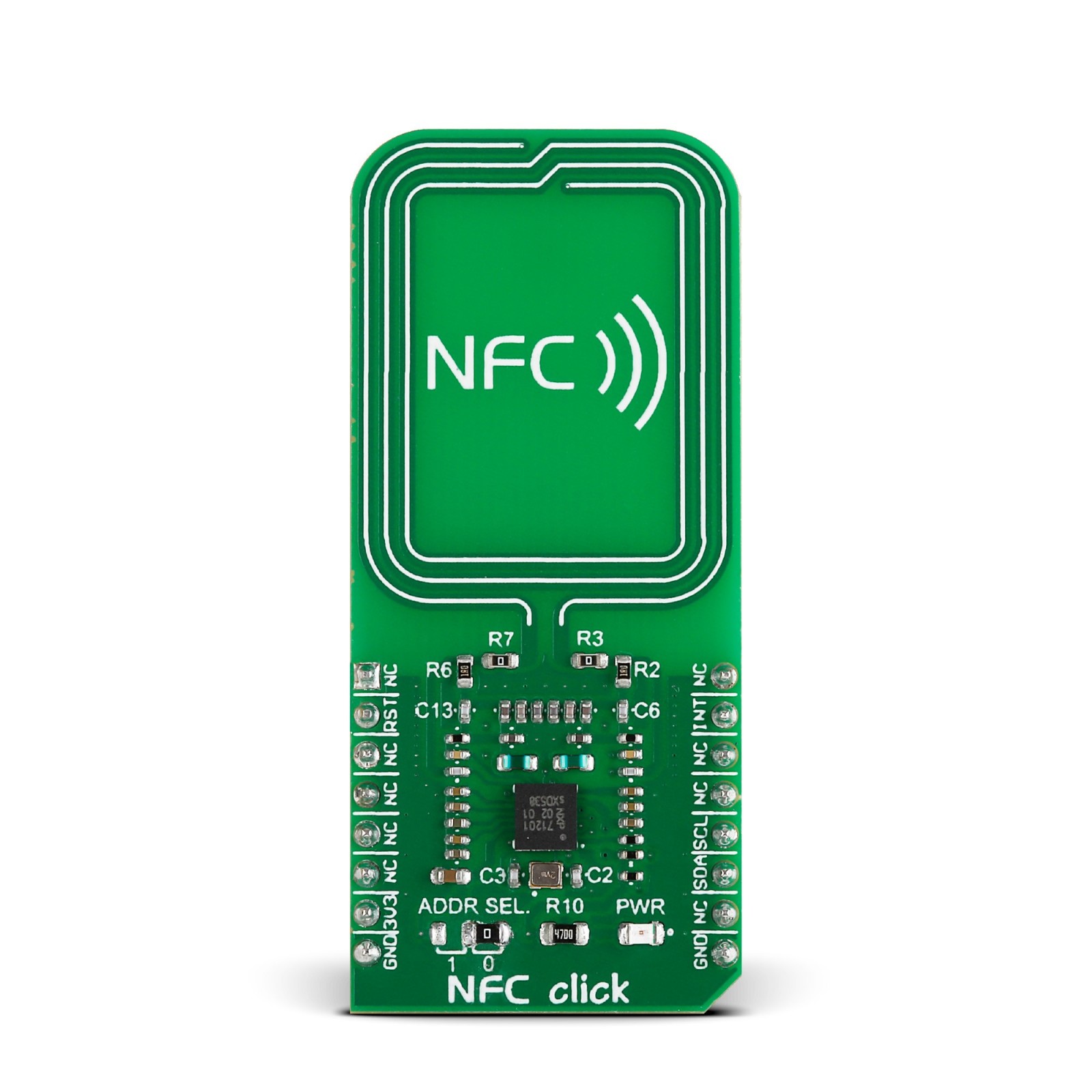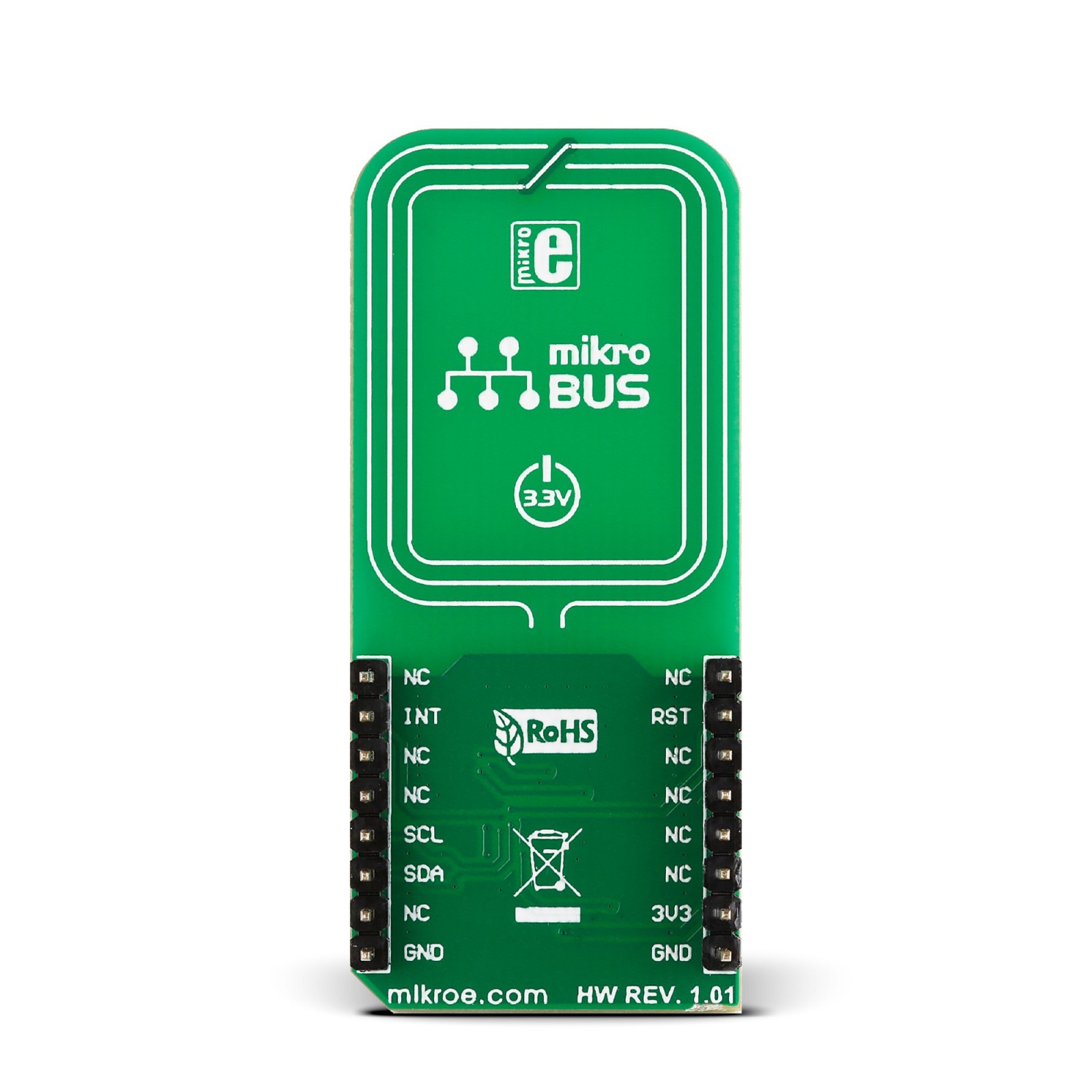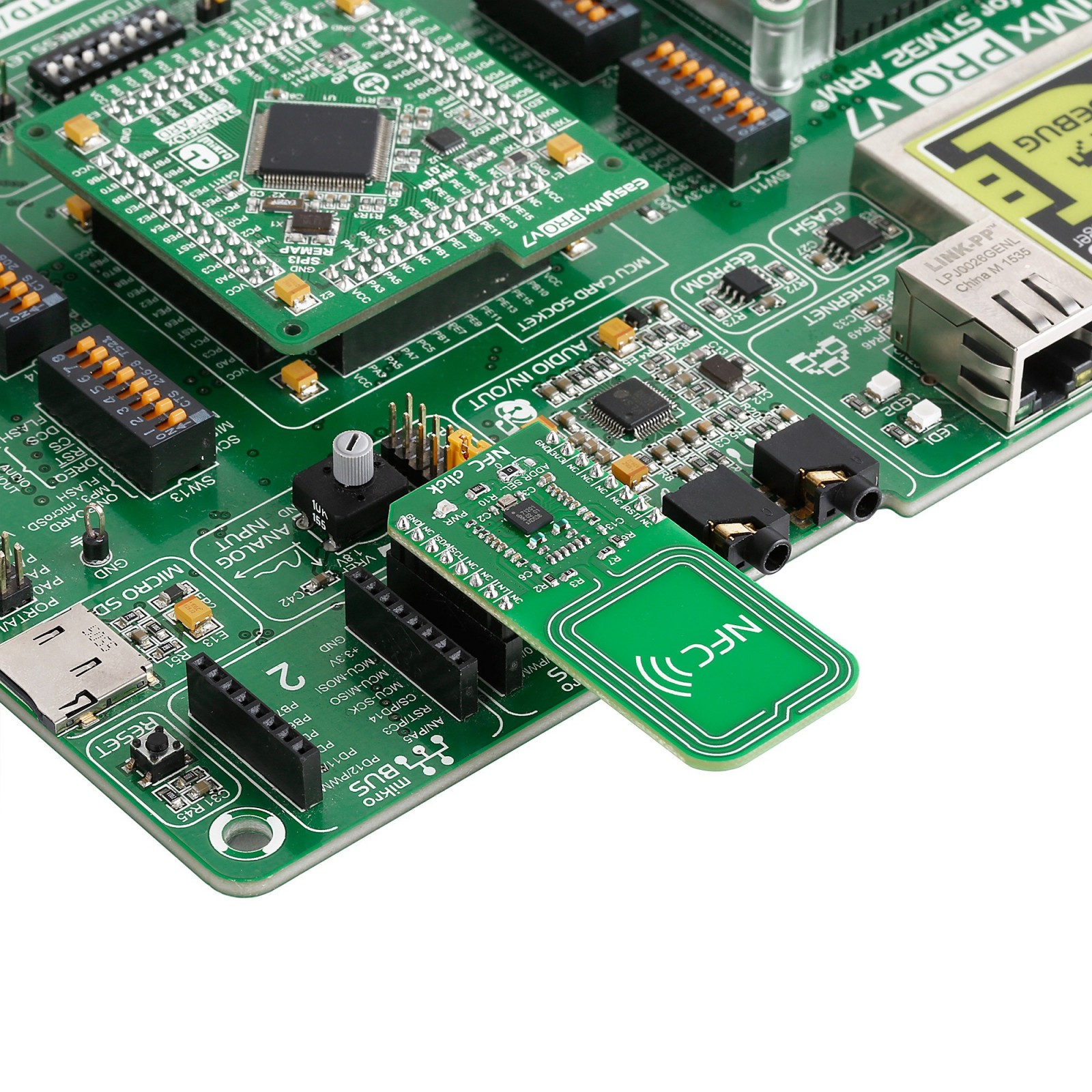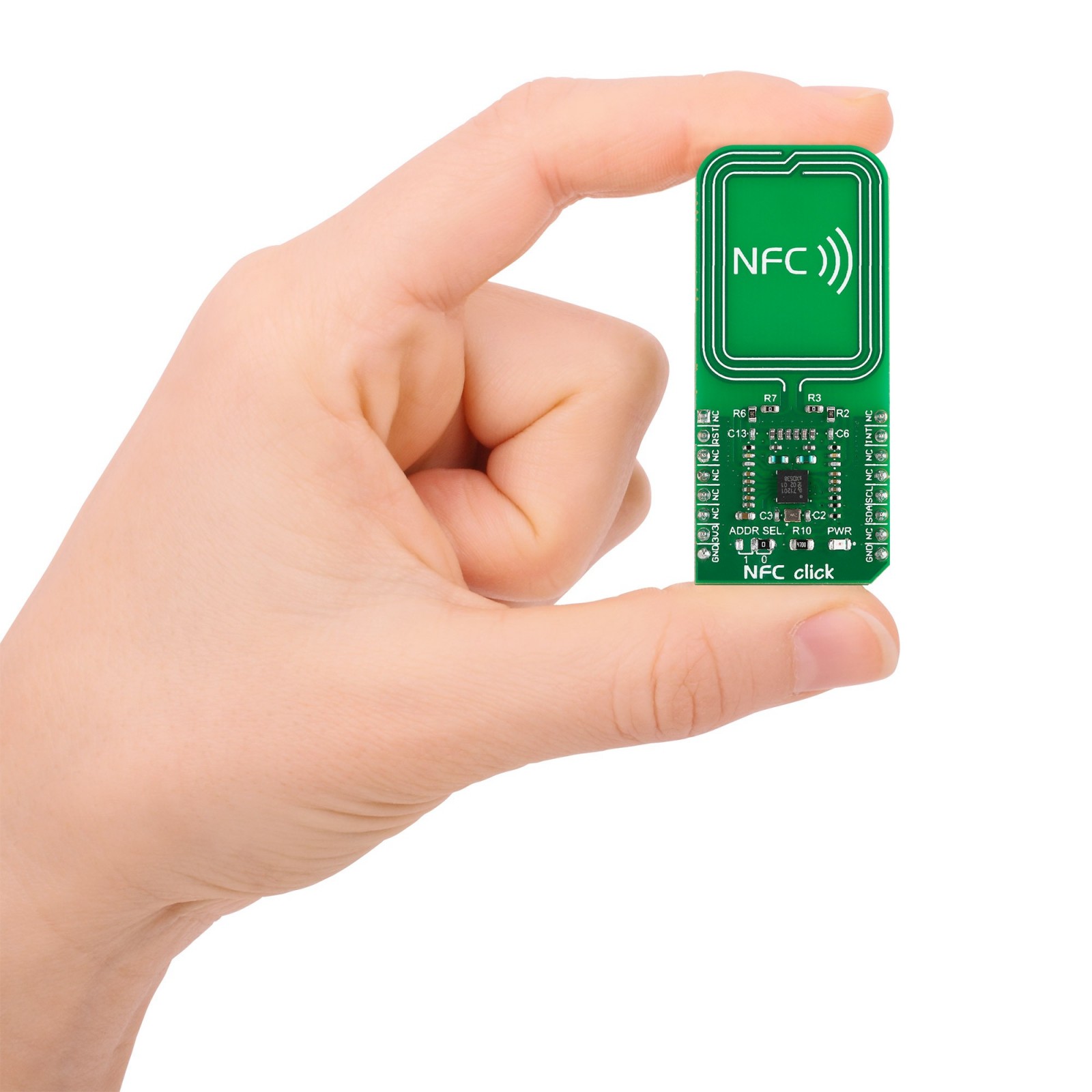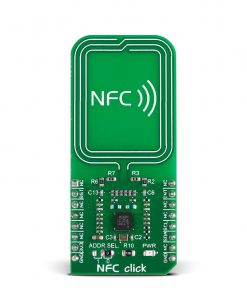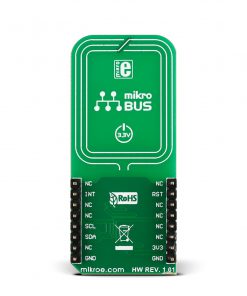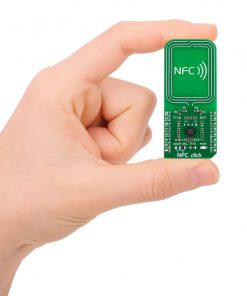NFC Click is a compact add-on board that contains an NFC transceiver for contactless communication at 13.56MHz. This board features the PN7120, a full NFC forum-compliant controller with integrated firmware and NCI interface from NXP Semiconductors. The PN7120 utilizes an outstanding modulation and demodulation concept for different contactless communication methods and protocols as a pre-integrated feature. It is fully compliant with many Reader/Writer standards (NFCIP-1 and NFCIP-2, ISO/IEC14443, ISO/IEC 15693, ISO/IEC 18000-3, MIFARE and FeliCa specifications), alongside support for reading all NFC tag types (type 1, 2, 3, and 4). This Click board™ makes the perfect solution for the development of contactless NFC applications like industrial, eGov readers, payment terminals, and more.
NFC Click is supported by a mikroSDK compliant library, which includes functions that simplify software development. This Click board™ comes as a fully tested product, ready to be used on a system equipped with the mikroBUS™ socket.
 ADC Click
1 × R540.00
ADC Click
1 × R540.00  MP3 Click
1 × R485.00
MP3 Click
1 × R485.00  GSM/GNSS Click
1 × R1,700.00
GSM/GNSS Click
1 × R1,700.00  3D Motion Click
1 × R1,050.00
3D Motion Click
1 × R1,050.00  EXPAND Click
1 × R260.00
EXPAND Click
1 × R260.00  tRF Click
1 × R1,050.00
tRF Click
1 × R1,050.00 
